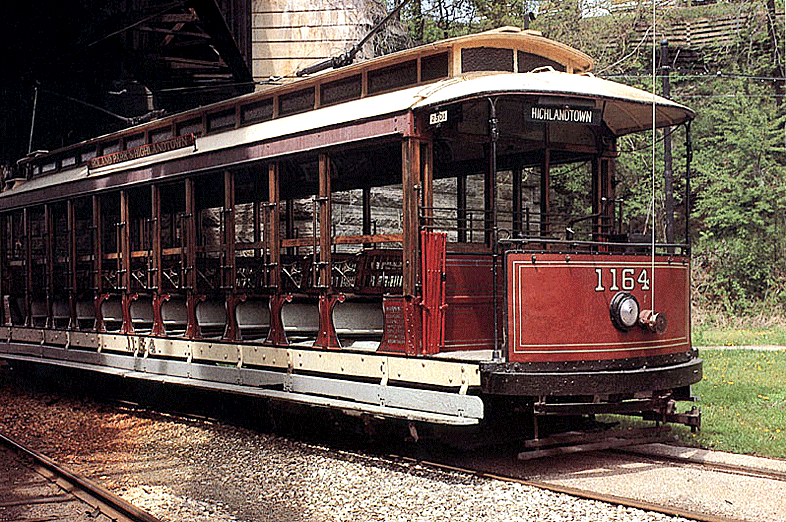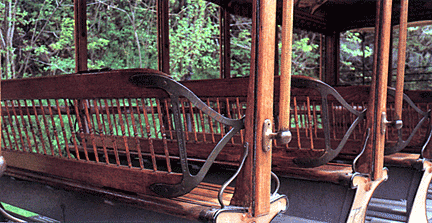|
From
the earliest days on, open cars were the summertime favorites of the
trolley-riding public. Inherited from the horse and cable systems, it became
increasingly unpopular with railway managements; and after a few years most
companies wished it never had been invented. Companies with open cars had to
maintain two sets of equipment--one for summer, one for winter.

Furthermore, their basic construction, which involved long transverse
benches without a center aisle, presented a problem of fare collection.
 Their
seating capacity was tremendous; but companies always said receipts rarely
matched capacity, even during the height of the summer season. A conductor
could easily miss an occasional fare, and companies viewed this circumstance
as inevitable. On the other hand, a conniving conductor could pocket a day's
wages on the side in addition to his regular pay. Their
seating capacity was tremendous; but companies always said receipts rarely
matched capacity, even during the height of the summer season. A conductor
could easily miss an occasional fare, and companies viewed this circumstance
as inevitable. On the other hand, a conniving conductor could pocket a day's
wages on the side in addition to his regular pay.
In many communities the open-car trolley partyóa car chartered for an
afternoon or evening jaunt, with group singing on the way homeóbecame
popular. Sometimes two or three cars, festooned with garlands of light bulbs
and perhaps a hired band tootling away in the head car, would be hired for
big trolley parties.
In sweltering weather traction companies would notice evening traffic
increases on open-car routes, reflecting the numbers of people who rode the
cars at random in the evening, just to cool off. In a day without movies,
air conditioning, or electronic amusements, riding nowhere in particular on
a hot evening became a happy custom. Up front the motorman would pull down
the green curtain to shield his window from reflections.
If a thunderstorm blew up, the conductor would unfurl the flapping canvas
side curtains and, when a passenger reached his stop, he would briefly
raised the section near his bench while those within crowded together to
avoid a splashing.

But though the riding public loved open cars, the companies didn't. It was a
considerable expense, for one thing, to buy and maintain extra rolling stock
that could be used only a few months of the year.
By the late 1920s, streetcar companies began to retire their open cars. Most
didnít have air brakes, and the growing automobile traffic made it necessary
that streetcar companies equip their open cars with air brakes. Dwindling
traffic and the high cost of equipping them with air brakes sealed their
doom.
Next:
Special Trolleys
|
